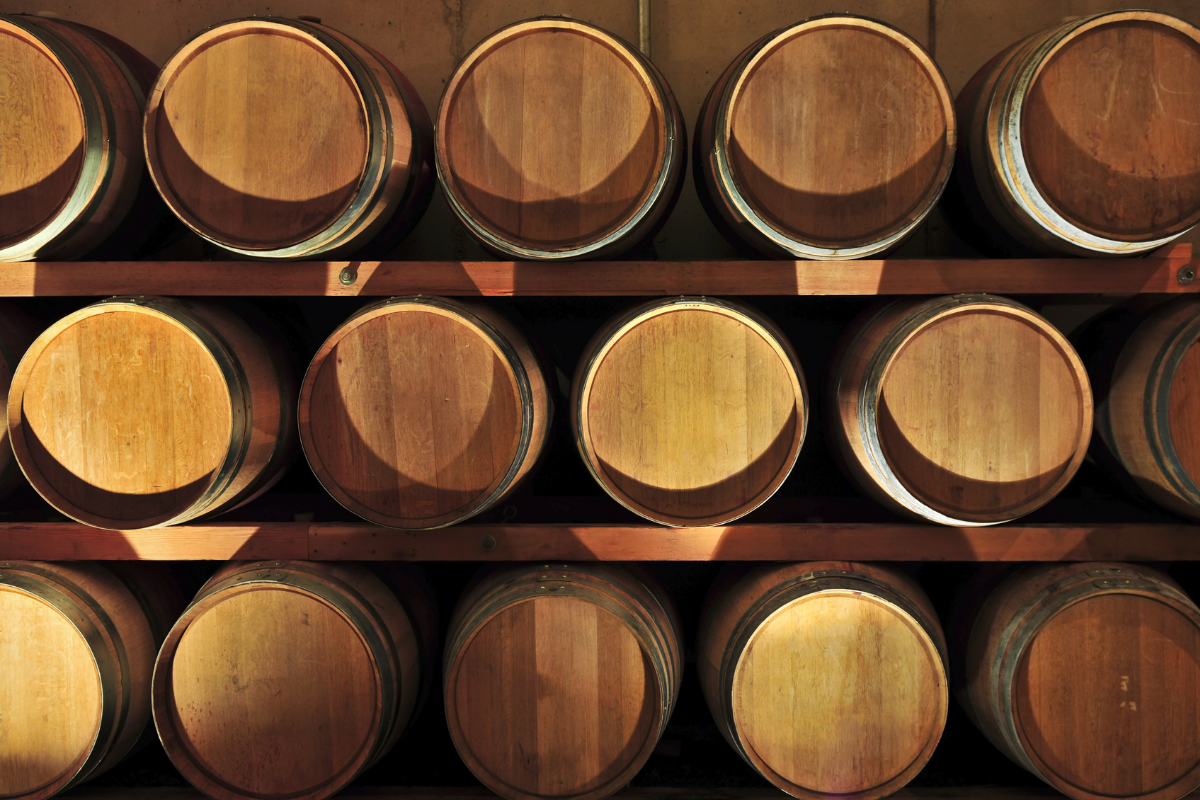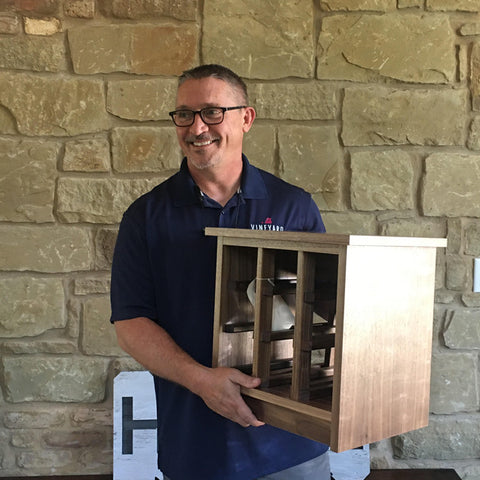Long-term wine storage is like preserving a moment in time. It's a valuable investment not only in the carefully chosen bottles, but also in the future moments of enjoyment they will bring.
This guide will help you select the best wines for long-term storage. Discover the factors that make a wine worth waiting for and learn how to ensure it reaches its full potential.
Why Some Wines Improve with Age?

Some wines improve with age due to the complex interplay of tannins, acids, and sugars which evolve over time, leading to a more balanced and harmonious flavor profile.
As wine ages, tannins—which can be harsh in young wines—soften, resulting in a smoother taste. The aging process also allows for the development of secondary and tertiary aromas and flavors that are not present in younger wines, such as notes of earth, leather, or tobacco.
Choosing the Right Wines for Aging
Selecting the right wines for aging is a crucial step for any collector or enthusiast looking to enjoy a mature bottle in the future. In the end, it's not just about the grape, but also about the wine’s structure, balance, and the conditions under which it was produced.
Red Wines with Longevity
Red wines with longevity often have high tannin levels and a robust structure, which allow them to age and develop complexity over time. Varietals like Cabernet Sauvignon and Nebbiolo are particularly known for their ability to mature gracefully, gaining nuanced flavors and a softer mouthfeel as the years pass.
Cabernet Sauvignon: The King of Ageability
Cabernet Sauvignon is renowned for its ageability, thanks to its high tannin content and concentrated flavors that evolve into a complex bouquet over time. It's a wine that rewards patience, often developing richer, more velvety textures and a spectrum of subtle flavors as it matures.
Syrah/Shiraz: Robust and Rich
Syrah, also known as Shiraz, distinguishes itself from Cabernet Sauvignon through its signature dark fruit flavors and spicy peppery notes. While both can age well, Syrah tends to have a richer body and softer tannins, which allows it to develop a smoother profile.
Nebbiolo: Italian Elegance
Nebbiolo stands out from Cabernet Sauvignon and Syrah with its notable acidity and aromatic complexity, which contribute to its longevity. Unlike the boldness of Cabernet and the richness of Syrah, Nebbiolo, particularly in Barolo and Barbaresco, offers a delicate balance of rose, cherry, and truffle flavors, which gain depth and subtlety over time, embodying the essence of Italian elegance.
White Wines That Can Stand the Test of Time

Chardonnay: A Versatile Choice
Chardonnay is celebrated for its versatility and aging potential, which allows it to develop a rich tapestry of flavors, from nutty and buttery to honeyed and spicy nuances. This transformation makes it a fascinating choice for those looking to explore the intricate changes that occur in white wines over time.
Riesling: Sweetness and Acidity
While Chardonnay develops rich, creamy flavors, Riesling transforms into a complex wine with unique petrol notes alongside honey and citrus flavors, offering a different kind of depth and vibrancy with age.
Semillon: The Underappreciated Gem
Semillon is often underappreciated because it’s less commonly found as a single varietal wine and is overshadowed by more popular whites like Chardonnay and Sauvignon Blanc. However, when aged, Semillon develops a remarkable depth and richness, with flavors evolving from fresh citrus and grassy notes to complex tones of honey, nuts, and dried fruits.
Optimal Storage Conditions
Creating the ideal environment for wine aging is essential for ensuring your collection matures to perfection. Optimal storage conditions—including stable, cool temperatures, proper humidity, minimal light exposure, and a vibration-free setting—are the foundation for preserving the integrity and enhancing the quality of your wines over time.
Temperature
Consistent, cool temperatures slow aging and preserve wines’ integrity.
Humidity
Proper humidity levels keep corks from drying out, preventing oxidation.
Light
UV rays can degrade wine; storage areas should be dark or have controlled lighting.
Vibration
Vibrations can disrupt the delicate aging process, so wines should be kept in a stable environment.
The Art of Patience: Monitoring Your Wine’s Evolution
Embracing the art of patience in wine aging is akin to nurturing a living story within each bottle. It’s a silent dialogue between the collector and the collection, where time itself sculpts the narrative of flavors and aromas, revealing the wine’s true potential with each passing year.
Tasting Intervals: When to Check on Your Wine
Periodic tasting helps you understand the aging process and anticipate peak maturity.
When it comes to tasting intervals for checking on your aging wine, here’s a detailed guide:
- 1-2 Years: Taste young wines that are known for their quick maturation to gauge early development.
- 3-5 Years: Check on medium-bodied reds or whites to assess their evolving complexity.
- 5-7 Years: Revisit full-bodied wines to observe the softening of tannins and emergence of secondary flavors.
- 10 Years: A significant milestone for premium wines, where tertiary aromas and a harmonious profile should be evident.
- 10-15 Years: Ideal for top-quality reds that are expected to have reached a level of optimal maturity.
- 20+ Years: Reserved for exceptional vintages and high-quality wines with proven longevity.
The Role of Vintage Variation
Different years produce different qualities in wine, affecting aging potential.
Here’s a breakdown of how different vintages can influence the aging process:
- Exceptional Vintages: Years with ideal weather conditions that produce wines with exceptional balance and concentration, often with higher aging potential.
- Challenging Vintages: Years with difficult weather, resulting in wines that may mature faster or require more careful monitoring.
- Consistent Vintages: Years that consistently produce reliable quality, leading to wines with predictable aging patterns.
- Variable Vintages: Years marked by unpredictable weather, creating wines that can surprise you with their aging trajectory.
Decanting: A Preview of Maturity
Decanting serves as a window into a wine’s future, offering a glimpse of the mature flavors and aromas that will emerge with time. It aerates the wine, softening the tannins and allowing the full spectrum of its character to shine through, akin to fast-forwarding to its peak.
When to Open: Recognizing Peak Maturity

Understanding the Aging Curve
Each wine has a unique aging curve, a timeline that predicts how it will develop over time. This curve is influenced by the wine’s varietal, vintage, and production methods. For example, a robust Cabernet Sauvignon may have a longer curve, peaking after decades, while a delicate Pinot Noir might reach its zenith much sooner. Knowing the aging curve helps collectors decide the optimal time to uncork and enjoy their wine at its best.
The Importance of Provenance
The provenance of a wine—its origin, including the vineyard, region, and conditions under which it was made and stored—greatly affects its aging potential. Wines from renowned regions with a history of longevity, stored in cellars with consistent temperatures and humidity, are more likely to age well. Provenance also includes the wine’s journey from the vineyard to your cellar, and wines that have been stored and transported properly retain their quality and age better.
Sharing the Experience: The Joy of Aged Wine
Sharing a bottle of aged wine is not just about tasting; it’s about sharing a story and a piece of history. Aged wines offer a unique experience, as they carry the essence of their vintage and the winemaker’s craft. They can be conversation starters, offering a glimpse into the past and the evolution of winemaking techniques.
Wrapping it Up

In the world of wine, time plays the most gracious host. It invites the flavors and aromas to unfold, turning each bottle into its own narrative. The art of long-term wine storage is not just about preserving a beverage; it is about creating an experience that will mature and evolve over time, much like the wine itself.
By selecting the right wine, maintaining optimal storage conditions, and exercising a little patience, your wine cellar will become a treasure trove of sensory delights. Each vintage will be a testament to the enduring dance between wine and time.


